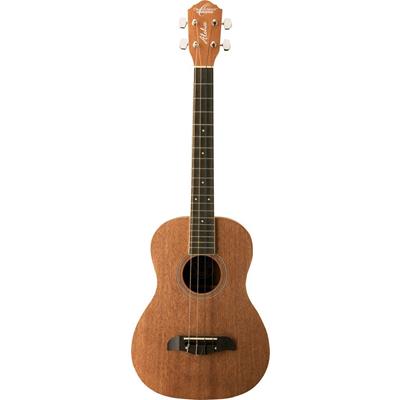 Back in my early teens, when I was just thirteen years old, an unexpected plan unfolded within my family. They deemed it beneficial for me to embark on a road trip toward a summer camp located thousands of miles away. My initial reaction to this proposal was characterized by a strong aversion, convinced that it was an utterly dreadful notion. So did my cousin, since he was the one I would be hitching a ride with. He was moving to California for a couple of years and wanted to take his worldly possessions with him in a truck across the country, very convenient, my parents thought. So they offered to give him gas money if he took me.
Back in my early teens, when I was just thirteen years old, an unexpected plan unfolded within my family. They deemed it beneficial for me to embark on a road trip toward a summer camp located thousands of miles away. My initial reaction to this proposal was characterized by a strong aversion, convinced that it was an utterly dreadful notion. So did my cousin, since he was the one I would be hitching a ride with. He was moving to California for a couple of years and wanted to take his worldly possessions with him in a truck across the country, very convenient, my parents thought. So they offered to give him gas money if he took me.
No matter how much I whined and how many tantrums I threw there was no changing my fate. One side had been bribed by the other, the system was corrupt and I had no chance of appeal. On an early June morning a truck, loaded with clothes, sports equipment, a couch (I have no idea why he was bringing a couch) a guitar, a drumset, and a mandolin, pulled up to my apartment building. My cousin had arrived, loaded with caffeine and excitement for the sunny side of California. I on the other hand had been loaded with a bad mood and sleep deprivation, which persisted through the trip (Oh teenage years).
Until, sometime when we entered Colorado, I fell asleep to the Grateful Dead. We had arrived by the time I had woken up and I had warmed to the idea of a summer camp. My cousin has warmed up to me too. As he dropped me off he told me that he would visit me and that the song I liked was called Friend of the Devil. “This is the only and the best mandolin I have. Take it.”
What Is The Best Mandolin
| Image | Mandolin Model | ||
|---|---|---|---|
 | Kentucky KM-1050 Master F-model Mandolin |  (5 / 5) (5 / 5) | Check on Amazon |
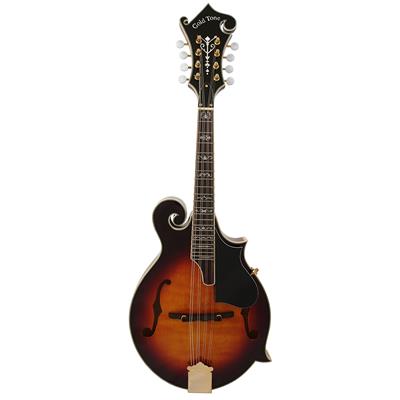 | Gold Tone GM-70 F-Style Mandolin |  (5 / 5) (5 / 5) | Check on Amazon |
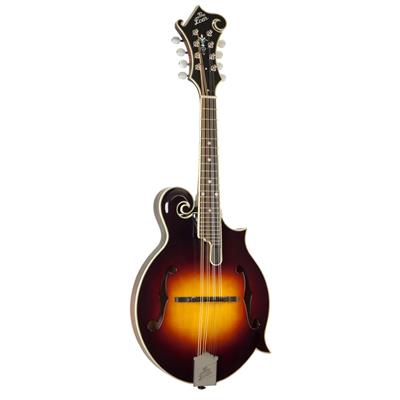 | The Loar LM-500-VS Contemporary F-Style Mandolin |  (4.9 / 5) (4.9 / 5) | Check on Amazon |
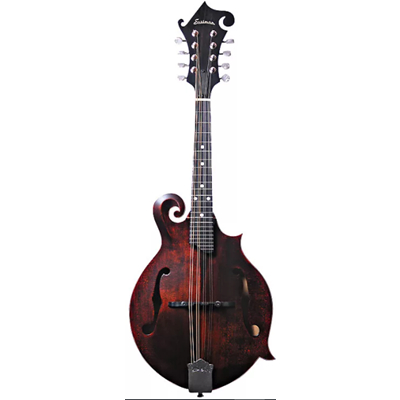 | Eastman MD315 Classic Finish F-style Mandolin |  (4.9 / 5) (4.9 / 5) | Check on Amazon |
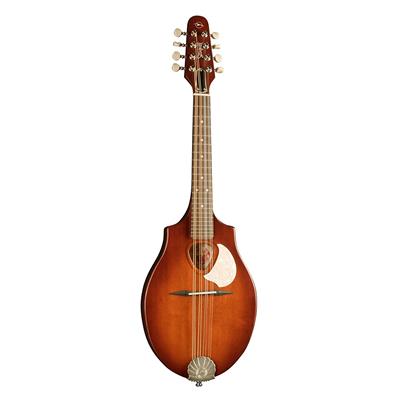 | Seagull S8 Mandolin SG, Burnt Amber Burnt Umber |  (4.8 / 5) (4.8 / 5) | Check on Amazon |
 | Kentucky KM-140 Standard A-model Mandolin |  (4.7 / 5) (4.7 / 5) | Check on Amazon |
 | Rogue Learn-the-Mandolin Package Sunburst |  (4.7 / 5) (4.7 / 5) | Check on Amazon |
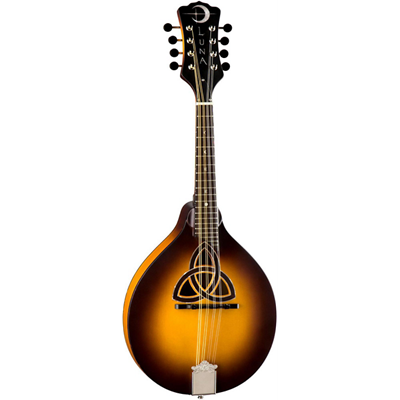 | Luna Folk Series Trinity A-Style Mandolin |  (4.7 / 5) (4.7 / 5) | Check on Amazon |
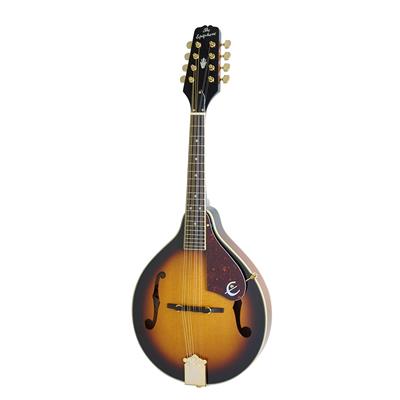 | Epiphone MM-30S "A-Style" Mandolin |  (4.6 / 5) (4.6 / 5) | Check on Amazon |
 | Rogue RM-100A A-Style Mandolin Sunburst |  (4.6 / 5) (4.6 / 5) | Check on Amazon |
Kentucky KM-1050 Master F-model Mandolin
| Build Quality: |  |
| Hardware: |  |
| Sound: |  |
| Value: |  |
| Average: |  |

We always say that beginners don’t require high-end instruments, as they will simply waste their potential and ruin something that could be utterly beautiful. But the thing is – some expensive models are so user-friendly that we can’t help but recommend them to novices, as well. Kentucky KM-1050 is a wonderful model regardless of your professional level – be it an amateur, beginner, or skilled player, this puppy will deliver the performance of your lifetime. The idea behind it stems from the experience gathered from the players back in the 1970s. The brand has made sure that every detail of this mandolin would be tailored to the musicians themselves so they’d benefit from its design.
KM-1050 looks fancy no matter which parts you look at – beautifully-shaped headstock with flower pot design and Kentucky script, fretboard extension, or the body itself. Carefully chosen woods make up the instrument: the body is crafted from solid flamed maple, while the top is made from solid Adirondack spruce. The one-piece maple neck and ebony fingerboard have a special design, which makes the mandolin easier to play. KM-1050 is definitely one of the best F-style models out there – just give it some time to open up and you’ll see the true nature hidden beneath its beautiful body.
Pros:
- Doesn’t get out of tune easily
- Excellent build quality
- Beautiful sound
Cons:
- Needs initial setup
- The sound requires some time to start opening up
Gold Tone GM-70 F-Style Mandolin

Many musicians favor the F-style mandolin due to its captivating design and purported sonic advantages. According to my friend, who is a firm believer, playing the F-style mandolin results in a mellower and more subdued tone compared to the oval sound hole variant. To me, it is not a decisive decision, as it is often a cosmetic choice. What I find important to consider in a mandolin is the make of the body, the quality of the tonewoods, the care it was made with, and, consequently, the sound it produces.
The Gold Tone GM-70 F-style mandolin has some of the top-notch features that I find to be important for me – the tone woods are high quality, being solid spruce for the top and maple for the back and sides. This means a very well-rounded sound that has no problem resonating tones, whether they be high or low, while also having a beautiful emphasis on the mid ranges. The instrument is very comfortable to play and a pleasure to listen to. Definitely worth consideration if money is not too much of an issue.
Pros:
- Stunning looks
- Great sound
- Quality tonewood that ages well
Cons:
- Pricey for beginners
- Not as widely available
The Loar LM-500-VS Contemporary F-Style Mandolin

It is interesting to think about the loar of the mandolin. Its history stretches back as far as it does and has become the parent of so many beautiful legends and archetypes, the instrument itself has become a legend, just like the musicians and bards who traveled and performed with it. The traditions of making a mandolin might have altered since those times, as have the traditions of the wandering musicians who play them, but one thing remains true – there is a sound that needs to be aspired to. The Loar LM-500-VS contemporary F-Style Mandolin has the potential to sound exactly like you would imagine a magical instrument in a legend would sound. The tonewoods are nothing surprising, being the same high-quality spruce and maple arrangement as in the mandolin above. Still, the instrument has both a unique sound and feel to it and, for the same price as the GM-70 might be a good alternative if you are looking for something not gold tone.
Pros:
- Tonewood that adds to looks, sound, and durability
- More high-end hardware than expected in this price range
- Stunning looks
Cons:
- Minor finish issues
- Manufactured in China (not the biggest issue for me, but some people prefer the U.S crafted mandolins)
Eastman MD315 Classic Finish F-style Mandolin

In the world of music, looks are just as important as the sound. To provide the correct feeling for the crowd the musician must be able to immerse the listener into the music they are listening to by suspending disbelief in the fact that the musician himself (or herself) is part of the music. Looking like you come from an era when the mandolin was in much wider use than today might be a great way to assist yourself in accomplishing the said mission. If that is your goal the Eastman MD315 Classic Finish F-style mandolin might be your best mandolin to consider.
The finish of the instrument invokes images of violins and dark wood, reminiscent of a time that seemed so much darker than the times of today. The spruce and maple of the body are used in a smart design choice, allowing the mandolin versatility in sound that the other two mandolins on the list enjoy. The looks and the sound might attract you and the make of the model might make you even more interested, as it seems to be designed to last decades. Being in the same price range as the couple listed below, it is a great alternative to consider.
Pros:
- Good finish
- Comes with a gig bag
- Loud
- Gorgeous looks
Cons:
- The finish might not be that consistent
- Not made in the U.S.
Seagull S8 Mandolin SG, Burnt Amber Burnt Umber

If the instrument is of the stringed variety, numerous music instrument manufacturing companies are likely to express their interest in producing it. Seagull, one of the more famous among the obscure instrument manufacturers, also decided that they wanted to make mandolins. To be honest, they were not wrong in considering dipping some of their resources into the instrument’s manufacturing. The Seagull S8 Mandolin SG, with a Burnt Amber finish, is a great entry into the list of the best mandolins on the market.
To start off with the design, well, let’s just say all of my fantasy setting desires are met with it. The body’s form evokes the nostalgia of classical mandolins, yet its flat back enhances playability, offering a significantly more comfortable experience. This stringed piece of art looks like it was plucked straight out of a fantasy novel or TV show while sounding just as good as most of the best modern mandolins out there. The fact that the tonewoods are laminated means that the instrument won’t be aging too much, but it also means a stable and sturdy body that will last you. This might be the best mandolin for the money that it is being sold for.
Pros:
- Sleek but solid build
- Great looks
- Good price
Cons:
- Might take some time to settle in
- Tusq nut is not the best material for this model
Kentucky KM-140 Standard A-model Mandolin

If there are traditions of the mandolin that come from the old world, there are also traditions that come from the new. Once the instrument had migrated to the United States it acquired a very specific legend to itself and eventually became part of a legacy of sorts. A legacy created by folk, country, and bluegrass musicians together. Today this legacy can be seen being carried over by modern guitar makers, and the Kentucky KM-140 Standard A-model mandolin is a great example of how these traditions are being represented in the modern world.
This instrument, being incredibly affordable for the level of quality it is, has been made in reverie and reference to the way mandolins have been made in the US for a long time. Traditions in design do not mean tradition in sound though, as the instrument has improved over the years. Spruce and maple, the favorite combination for the mandolin makers, is a great combination of tonewoods that will help the instrument provide the sound you did not realize you needed so much. Great affordable mandolin for anyone looking to start playing.
Pros:
- Great quality build
- Easy setup
- Nice sound, articulation, and tone
Cons:
- Not the best strings
- Might be a bit pricey for beginners
Rogue Learn-the-Mandolin Package Sunburst

It is with great pride that I, and many other men, will tell you that cheap does not always mean bad. In fact, I will tell you to calm you down, cheap simply means that it is affordable and that the instrument has not suffered in quality of make. While I smile and nod try to tell you the cheap item is good, I will also be nagged by my conscience to tell you that yes, a lower price does mean lower quality. It is simply a rule of life that is to be expected.
Still, there are times when the price might surprise you and allow you to buy a perfectly adequate instrument for something that feels like nothing. The Rogue Learn-the-Mandolin Package Sunburst is one of the few packages that actually give you more than the salesmen think it does. While coming with bonus items, the mandolin itself is perfect if you are a beginner looking to start somewhere. You will have a full set of items related to the instrument, while also getting one that sounds perfectly fine for your beginner level. The ease of play guarantees that soon enough you will be the life of the bonfire party with your mandolin.
Pros:
- Bargain price
- Sounds and feels nicer than expected
- Great option for beginners
- Padded gig bag
Cons:
- Cheap strings
- Low-quality tuners
- Action was too high
- There’s a little buzz
Luna Folk Series Trinity A-Style Mandolin

The beauty of the mandolin is only further enhanced by the decorations of the genre that it is traditionally played in, though you might not be aware of it. The modern incarnation of Celtic music has adopted the mandolin as its own and has been using it as one of its greatest musical assets. Strange, but lucky at the same time, since the mandolin has only started looking better for it. The Luna Folk Series Trinity A-Style mandolin is a great example of what Celtic design can do to improve an instrument.
The Trinity soundhole is extremely stylish without sacrificing any of the sounds. The traditional combination of the tonewoods provides an unhindered versatility that folk players and rock players alike will appreciate. All the while, despite not being as cheap as some of the other options on the list, this instrument is affordable and easily one of the best in its price range.
Pros:
- Good volume
- Great price for intermediate mandolin
- Easy setup
Cons:
- Not made in the U.S.
- Needs better strings
- The action is a bit high
Epiphone MM-30S “A-Style” Mandolin

Not all instruments require special introductions, especially when we are discussing mandolins. They are unique as it is, with their doubling of strings and beautiful designs. The history of the instrument further adds to its charm. Still, it needs no introduction, as anyone who looks at it or listens to it, will immediately be captivated by its unique nature. The Epiphone MM-30S A Style Mandolin capitalizes on this fascination with the instrument and creates something that is both simple and extremely refined.
This instrument shares some of the best features with mandolins on two sides of the spectrum – the most expensive and the least expensive. It has a great sound while maintaining a rustic design that only serves to enhance the mystery and beauty of the instrument. It also is extremely affordable, making it one of the best beginner mandolins on the list. The affordability and the ease of play, combined with a superb sound for the price, make this the perfect candidate if you are considering buying your first mandolin.
Pros:
- Crisp sound
- Tonewood that ages well
- Adjustable bridge
- Good price
Cons:
- Needs to be set up
- Strings
Rogue RM-100A A-Style Mandolin Sunburst

Sometimes you will end up buying things and walking out of the store, after paying, still feeling like you stole them. This sense often visits me and sticks with me when I buy something unexpectedly good for an unexpectedly cheap price. At those times I feel like a rogue, straight from an RPG game, that just got away with the crime of the century. Makes the name of Rogue RM-100A A style mandolin feel a lot more apt now that you think about it.
Paying way under 100 for something that will bring you joy for months and years to come does feel like some kind of thievery. Fortunately, buying this is legal, and the fact that it is as good as it is, especially for the money you’re giving up for it, is also legal. I guess I should give these guys a call and thank them, or maybe you could do that for me by buying this mandolin and starting your venture into the instrument with it. Giving money to the manufacturer is the best way to thank them after all.
Pros:
- Budget-friendly
- A good starting point for beginners
- Okay quality for the price
Cons:
- Not the best tone
- Fragile
- Bad strings
History of Mandolin
The history of the mandolin begins in the same place as the history of traveling musicians and bards that your imagination is fueled by. Italy, the birthplace of so much of the Western culture we take granted for, is the birthplace (as far as we know) of the first steel-strung mandolins. We can’t know for sure because there might have been other places with the instrument, but we have to get most of our history from the literature of the world. And the historical literature of the world is not always the most reliable source, but that is not what we are here to discuss.
The mandolin is the direct successor of the lute, the legendary instrument that has saturated popular culture representations of musicians from the middle ages. The Mandolin became extremely popular in the 17th and 18th centuries when musicians started traveling with the instrument and teaching how to play it, while also performing concerts. The instrument was referred to as the Neapolitan Mandolin at the time because it originated in Naples. They were easy to recognize because of their almond-shaped body, and bowl-shaped backs. The popularity of the instrument persisted into the 20th century, whence it arrived in the United States of America.
The shape of the mandolin went through changed over time, into the shape that is popular today. The modern flatback, carved shape of the mandolin that you often see is the result of the hard work put into the design by the Gibson Company. I guess we should thank them because the bowl-back mandolin is not the most comfortable to play. These instruments were first sold by dealers, who were also teachers, to their students. Those who would buy the instrument would often become part of the mandolin orchestra.
Up to twenty performers could be part of the orchestra, all of them having a unique “representative” of the mandolin family, because the mandolin family is rather large, with a diverse set of sounds that can work together, in the right direction, to produce beautiful compositions. This practice quickly died down after the 1920s though as the new age of music arrived. The mandolin found widespread use in many new genres.
One of the genres to adopt the mandolin the fastest was Bluegrass. Thanks to Bill Monroe, the so-called father of bluegrass, which is a rightful name really, the mandolin became the favored instrument by many bluegrass players. His performances on the radio inspired people around the South and the US to adopt the instrument and his style of play. The instrument came into wide demand for bluegrass players, from which it bled into the country music scene.
Even today you will find the instrument being used by bluegrass and country musicians. The success of the instrument in these genres translated into interest from musicians in other genres. You could eventually find the Mandolin being used in Folk music, Jazz music and even Rock and Roll. What you might find the most surprising is that before any of these genres adopted the mandolin, the instrument was already in wide use among classical musicians and composers. Beethoven, Vivaldi, Schoenberg, Stravinsky and so many others were composed specifically for this unique and beautiful instrument.
Types of Mandolin
Despite the mandolin referring to one popular instrument that we often think of when talking about the instrument, the name may refer to a number of instruments that belong to the mandolin family. Some of these instruments are less in use than others, but all of them have something to offer to musicians looking for diversity in their sound and music.
The Mandolin – The one and most famous member of the family, this instrument is the Soprano instrument of the family. It is the most widely used one in popular culture and the favorite of many.
The Mandola – The mandola is slightly larger than the mandolin as is tuned a fifth below the mandolin. Tuned slightly differently, this instrument offers a beautiful sound to anyone brave enough to venture slightly beyond the mainstream.
The Octave Mandolin – Similar to many ways to the mandolin, this instrument is always tuned an octave below it and provides a deeper, warmer sound. Fun times for fun players looking for a deeper sound.
The Mando-Cello – The name of this instrument tells everything you need to know about it – larger and a much lower tuning, this large instrument is fun to play but takes a lot of time and practice to learn.
The Mando-Bass – You remember how I mentioned that there used to be mandolin orchestras once upon a time? Well, the Mando-Bass was produced specifically for the use of these orchestras, only having four strings, being very large and heavy and low in sound. You won’t encounter too many of these nowadays, but if you do, might be worth attempting to grab a hold and play. Just don’t be a bad person about it.
Mandolin Parts
The mandolin is composed of several parts that will remind you of the cousin instrument: the guitar. This makes sense since both of these instruments come from the same origin and are both stringed instruments. The fact that the mandolin is closer related to the lute does mean that it is different from the guitar, not only in size and number of strings. The mandolin is made up of several components that the knowledge of can help you pick the best one for you
Headstock – The part that most of the stringed instruments have, the headstock is an important part of the instrument that houses the tuning pegs.
Tuning Pegs – Where you get to tune your mandolin. You have eight of them on the average mandolin. Tuned in pairs that sound identical, these really should be very sturdy and tuning steady.
Nut – On the bottom of the headstock, just like in the guitar, it keeps the strings raised off of the fretboard and the body.
Neck – Extending from the body of the mandolin. Sometimes has a metal truss rod for strength and to allow adjustments. The topside has the fretboard located on it. This is where you will be controlling the chords and tones of the instrument. This is also where the metal frets are embedded, so you can keep track of the finger location.
Body – The body of the mandolin is made up the same way as that of the guitar – top, back and sides. The top side of the mandolin is responsible for most of the sound that the instrument produces. The woods used for making this part of the guitar are decisive in what the guitar will sound like tonally.
Sound Hole – There are several shapes that are popular with the instrument, F holes and Oval being most common.
Bridge – Where the vibration of the strings is transferred to the top wood of the body, it is usually made of wood.
Tailpiece – This is where the strings of the instrument are anchored. Usually made of ornate metals, but other possibilities exist.
Conclusion
It is strange how expectations of things don’t always come as true as you thought they would. On the road trip I dreaded so much, me and my cousin had to stop several times, taking breaks in between hours upon hours of driving. Sometimes we would stop at a motel, sometimes we would take a turn off of the highway, onto a small road and end up at a camping site.
We did not do too much sightseeing. Most of the things we saw passing by in cars. The most beautiful things we saw were the woods and the fields and the open county. The most enjoyable thing we did though was that one time when we stopped at a camping site. The world had been whizzing by for an extra amount of hours, since we did not want to stop in the rain. When we finally found dry ground we stopped and we set up a camp under the setting sun.
The fire pit was lit and me, my cousin and a middle-aged husband and wife sat around the fire, making s’mores, listening to my cousin play his mandolin. The old man mentioned that a long time ago he spent some time traveling around with the Grateful Dead and that was where he met his wife. The old man picked up the guitar that my cousin had and he started playing too. Before you knew it, I was listening to a performance of the Grateful Dead.
It was a peaceful night, with the fire crackling, the s’mores melting, the darkness encroaching, but it wasn’t scary. The old wife’s singing and the harmonic combination of the guitar and mandolin created a sense of mystery. As if the stars were pushing down, attempting to rip themselves off the sky and down to us. I dreamt they did. The summer would be a lot of that. Me at a campfire, the mandolin at my side, people singing and eventually a good night’s sleep, with the stars pouring down into my mind. That was one of the best mandolin-fueled summers in my life.



